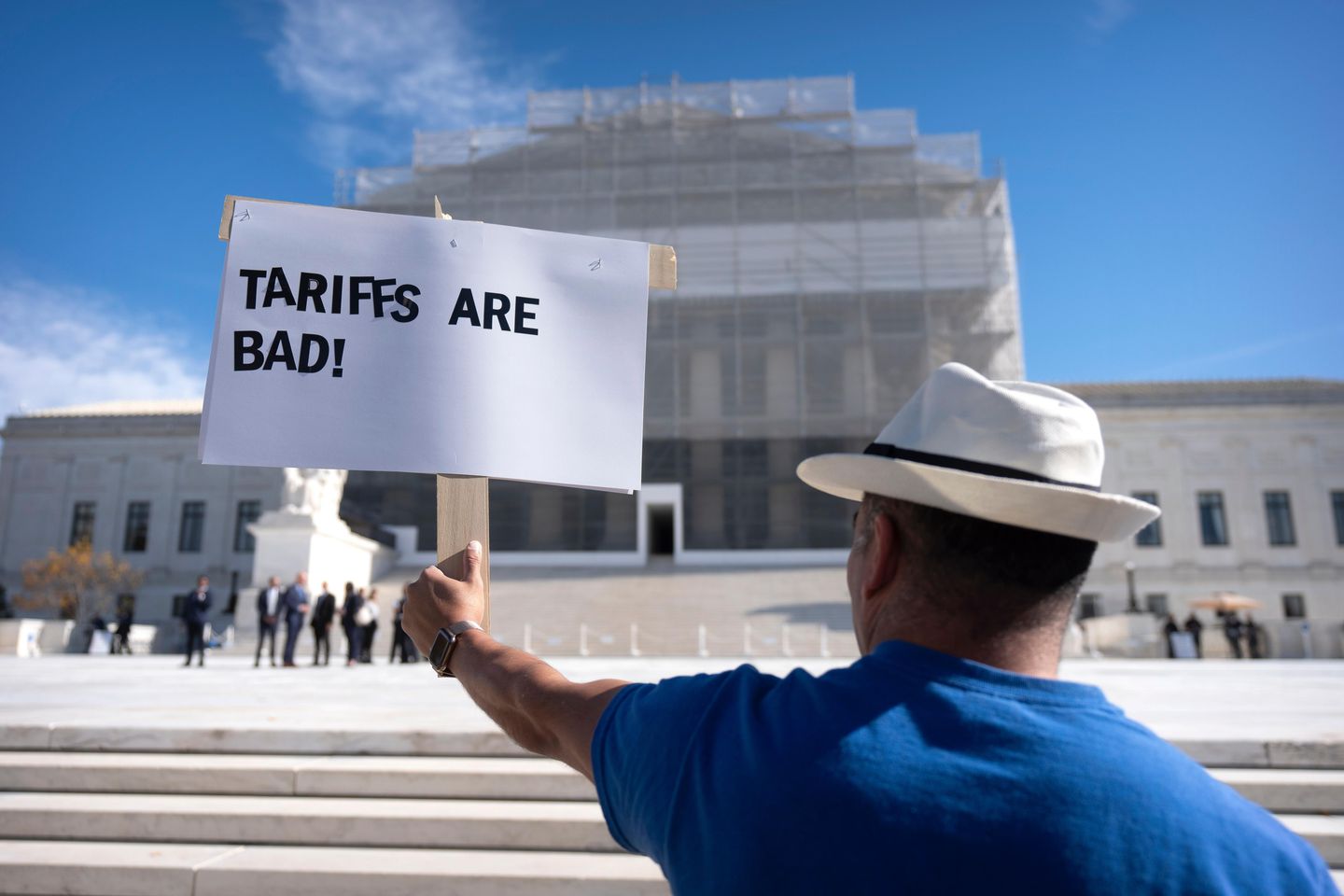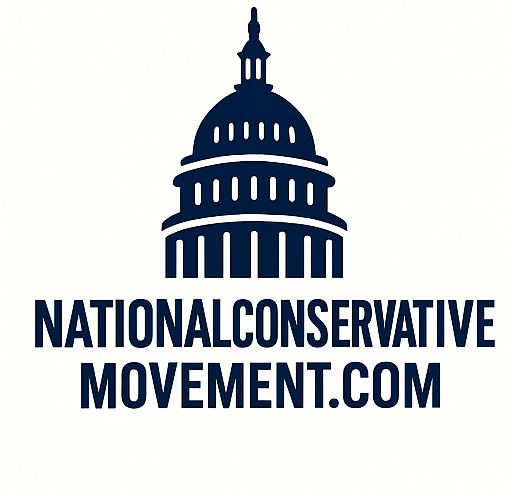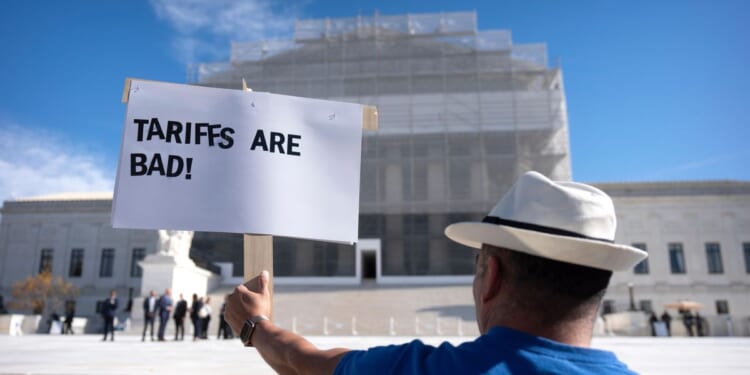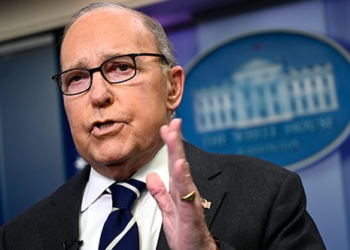
The Supreme Court on Wednesday grappled with the legality of President Trump’s unilateral decision to impose global tariffs, with skeptical justices questioning whether Congress delegated power to the president to collect revenue from foreign trade.
Chief Justice John G. Roberts Jr., a pivotal vote, said the power to tax has “always been a core power of Congress.”
“It’s a congressional power, not a presidential power, to tax,” said Justice Sonia Sotomayor, a member of the court’s liberal wing.
Justices are weighing a case brought by small, import-reliant businesses that argue Mr. Trump overstepped his authority by invoking the International Emergency Economic Powers Act of 1977 to set tariffs on dozens of trading partners. Businesses said the levies on foreign goods were a massive burden and could drive them into bankruptcy.
A ruling against Mr. Trump would blow a major hole in his trade agenda, forcing him to seek workarounds to backfill his levies.
Mr. Trump issued tariffs under IEEPA to compel action on fentanyl trafficking and correct trade imbalances with countries that harm U.S. manufacturing and workers.
Solicitor General D. John Sauer, arguing for the administration on Wednesday, focused on the president’s need to regulate foreign power through tariffs.
“The fact that they raise revenue is only incidental,” he told the court.
But Neal Katyal, an attorney for the suing businesses, said Mr. Trump unlawfully bypassed Congress to pass a massive new tax with his tariffs.
“We will never get this power back if the government wins this case,” Mr. Katyal said.
The high court’s moderate justices asked probing questions of both sides.
Chief Justice Roberts pointedly told Mr. Sauer that IEEPA “doesn’t use the word ’tariffs.’”
“Who pays the tariffs?” he added, noting Americans take on the cost.
But he also told Mr. Katyal that Mr. Trump’s use of tariffs as a trade negotiating tool had been “quite effective.”
Other GOP appointees were tougher on the administration.
Justice Neil M. Gorsuch said under the president’s theory of using emergency power to impose tariffs, the same could be done with climate change in the future — or with declaring war.
He feared the gradual erosion of congressional authority in favor of the executive.
Another Trump appointee, Justice Amy Coney Barrett, questioned whether prior cases supported Mr. Trump’s position. She also seemed taken aback by the breadth of the tariffs.
“I mean, these are kind of across the board,” she said.
Trade is the central plank of Mr. Trump’s second term, alongside immigration enforcement, and the White House is banking on the court’s 6-3 conservative majority to uphold his tariff plans.
Mr. Trump says tariffs, or duties on foreign goods brought to U.S. markets, allow him to generate revenue, gain leverage in international negotiations and protect U.S. industries and workers.
Mr. Trump’s sector-specific tariffs aren’t a part of the Supreme Court case, making them a safer option for the tariff-loving administration. The president slapped levies on cars, auto parts, steel, aluminum and copper earlier this year.
In recent weeks, he leaned into non-IEEPA authorities by targeting imported heavy trucks, upholstered furniture and kitchen and bath cabinets.
Yet the president used IEEPA to impose a blanket tariff of 10% on all imports and nation-by-nation levies that are far higher.
While IEEPA doesn’t actually mention tariffs, Mr. Sauer said it does grant the president the ability to “regulate importation,” which he said is good enough.
Mr. Sauer told the justices that the emergency supporting tariffs from the president were a “public health crisis taking hundreds of thousands of American lives” — and that the tariffs have allowed Mr. Trump to negotiate new trade deals.
Mr. Trump compelled Japan and South Korea to invest hundreds of billions of dollars in U.S. projects in exchange for lower tariff rates. He’s using a 50% tariff on Indian imports to stop New Delhi from purchasing Russian oil that funds Moscow’s invasion of Ukraine.
The administration said the mere threat of tariffs compels other countries to buy more U.S. farm products and other goods, while forcing nations like China to crack down on the illicit fentanyl trade.
Three justices from the conservative wing seemed open to Mr. Trump’s use of IEEPA as leverage.
Justices Clarence Thomas and Samuel A. Alito said presidents could have non-revenue reasons for imposing tariffs, such as to avoid a war or gain leverage in a hostage situation.
Mr. Katyal said the president could resort to other levers or get Congress to approve a tariff in that situation.
Justice Brett M. Kavanaugh, a Trump appointee, said there seemed to be a precedent for unilateral tariffs, pointing to President Nixon’s global 10% levy in 1971.
The court’s liberal justices said Congress — not the president — retains control over tariff implementation and raising revenues.
Justice Elena Kagan referred to tariffs as “quintessential Article I powers.”
Justice Sotomayor invoked climate change as an emergency and questioned why President Joe Biden couldn’t have cited that in his reasoning for forgiving student loans.
In that case, Mr. Biden was rejected by the court, but he had cited COVID-19 in his attempt to forgive some student debts.
Justice Ketanji Brown Jackson said legislative history shows Congress was interested in freezing or controlling property actions where foreign interest is involved when discussing a president’s regulatory power.
“We have evidence that Congress was trying to do a specific thing,” she said, batting down the tariff suggestion.
Mr. Katyal argued that if the government wins, presidents could cite emergencies to bypass Congress going forward in an unchecked manner.
He said Congress is in charge of imposing and collecting taxes.
“Tariffs are taxes,” he said. “Tariffs start the tax bill.”
The Senate voted last week in symbolic moves to terminate Mr. Trump’s tariff authority under IEEPA, including levies on Brazil, Canada and other nations.
Democrats and anti-tariff Republicans said tariff costs and retaliation by other countries were harming U.S. industries.
The GOP-led House is not expected to take up the measures, making them a messaging vehicle for lawmakers worried about the extent of Mr. Trump’s power.
“No single leader should have unlimited authority to raise costs on Americans without accountability,” Sen. Mark Warner, Virginia Democrat, said Wednesday.
Both sides hope the Supreme Court will issue a quick decision in the legal fight, but the justices often take weeks if not months to issue an opinion in complex cases.
Nearly a third of imports, or 29%, are subject to tariffs imposed under IEEPA, according to a New York Times analysis.
Those levies, combined with tariffs under other authorities, have reaped $309 billion in U.S. revenue so far this year, compared with $164 billion at this time last year, according to the Penn Wharton Budget Model.
Treasury Secretary Scott Bessent estimated the U.S. would have to refund $750 billion to $1 trillion in tariff revenue if the court decides against Mr. Trump and the ruling doesn’t arrive until June.
Mr. Trump said the case is a matter of “life and death” for the country, because a loss would send trade relations into disarray.
“Plaintiffs would unwind trade arrangements worth trillions of dollars, as President Trump has leveraged the IEEPA tariffs into negotiated framework deals with major trading partners — including the European Union, the United Kingdom, Japan, South Korea, and now China — that address underlying causes of the declared emergencies,” the administration said in legal briefs.
The cases are Learning Resources v. Trump, and Trump v. V.O.S. Selections.










